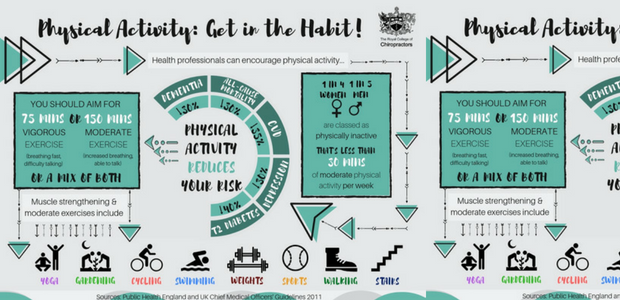A Day In The Life Of A Back Pain Sufferer: Tips For Handling Pain At The Office
A Day In The Life Of A Back Pain Sufferer: Tips For Handling Pain At The Office
Blog Article
Content Composed By-Kofod Costello
Visualize navigating with your day with a consistent tip of pain sticking around in your back. https://erickidxrm.blogrelation.com/37988057/a-dive-into-exposing-typical-misconceptions-concerning-chiropractic-practitioners-will-certainly-challenge-your-ideas-and-reveal-unexpected-truths-about-this-occupation to locate relief while managing jobs can be intimidating. However, with the best strategies in position, managing your neck and back pain at the office can be much less of a burden. By making easy adjustments to your workspace and including targeted practices, you can take control of your pain and boost your performance. Keep tuned to uncover useful pointers that might make a considerable difference in your everyday work regimen.
Typical Triggers of Pain In The Back
When it comes to managing back pain at work, recognizing the usual triggers is vital. Poor pose ranks high amongst these triggers. Sitting hunched over at your workdesk for extended durations can stress your back muscles and bring about pain.
Lifting heavy items inaccurately is one more culprit. Keep in mind to bend your knees and use your legs, not your back, when raising to avoid unnecessary pressure.
Lack of motion throughout the day can additionally contribute to back pain. Make a mindful initiative to take time-outs to extend and walk around, as long term sitting can exacerbate pain.
Moreover, stress and anxiety is a substantial trigger for neck and back pain. High anxiety levels can cause muscle mass tension, specifically in the back location, resulting in discomfort. It's essential to discover healthy methods to manage anxiety, such as deep breathing workouts or mindfulness techniques.
Lastly, poor ergonomics in your office can additionally lead to neck and back pain. Guaranteeing your chair, desk, and computer system arrangement are ergonomically friendly can make a substantial difference in minimizing pressure on your back.
Ergonomic Workstation Arrangement
To develop a work area that sustains your back health and wellness and decreases the risk of pain, concentrating on an ergonomic workstation configuration is key.
Begin by adjusting your chair to make sure that your feet are level on the flooring, knees are at a 90-degree angle, and your lower back is sustained by the chair's back assistance.
Guarantee your computer screen is at eye level to prevent stressing your neck and shoulders.
just click the up coming website -board and computer mouse close to you to stop getting to and straining your arms.
Take regular breaks to stand, stretch, and walk to minimize rigidity and advertise circulation.
Take into relevant webpage making use of a standing desk or a workdesk converter to alternate between sitting and standing throughout the day.
Keep in mind to maintain often used items within arm's reach to stay clear of twisting or overreaching.
Active Techniques for Discomfort Relief
Looking for means to actively alleviate pain in the back while at the workplace? Integrating basic yet effective strategies can aid reduce discomfort and improve your productivity. Start by taking https://besthealthchiropracticcli27261.howeweb.com/32453510/contrasting-chiropractic-care-adjustments-to-standard-physical-treatment-which-is-right-for-you -outs throughout the day to stretch and move.
Gentle exercises like shoulder rolls, neck stretches, and standing hamstring stretches can loosen up tight muscles and reduce tension. In addition, exercising great posture is important for minimizing neck and back pain. Sit up straight, readjust your chair to sustain your reduced back, and maintain your feet level on the flooring.
Participating in normal physical activity outside of work can additionally add to pain relief. Tasks such as strolling, swimming, or yoga exercise can enhance your back muscle mass and boost flexibility, bring about much better discomfort monitoring in the long run. Remember to remain moisturized and preserve a healthy diet plan to support overall spine health and wellness.
Additionally, think about using ergonomic tools like lumbar cushions or standing workdesks to promote proper placement and lower stress on your back. By proactively including these strategies into your day-to-day routine, you can proactively take care of back pain and enhance your comfort at the workplace.
Final thought
In conclusion, by executing these positive techniques at the workplace, you can successfully handle your back pain and improve your total health. Remember to create an ergonomic workstation arrangement, take regular breaks to stretch, engage in gentle exercises, and keep good posture. With these ideas, you can mitigate the impact of back pain and make your workday extra comfortable and efficient. Stay positive and care for your back to really feel far better at the office.
